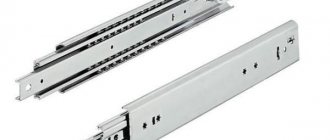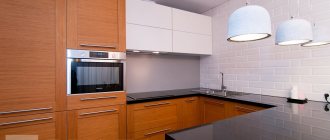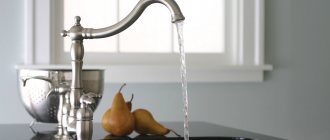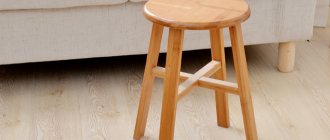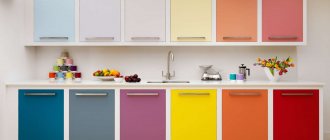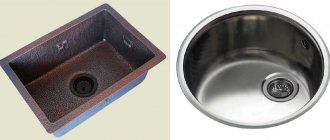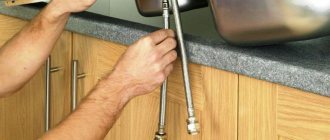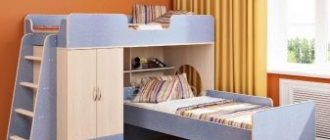The variety of floor coverings that have appeared on the building materials market in recent years has not been able to move linoleum from the pedestal of the most popular. It fits seamlessly into the interior of any room, including bedrooms, kitchens and children's rooms, can withstand the highest loads and compares favorably in price with other flooring.
Most often, linoleum flooring can be found in the kitchen. Despite the fact that linoleum is considered a fairly simple material, its choice requires the most careful approach to the type, texture, color and installation methods. Only with proper calculations and following step-by-step instructions can you not worry about the longevity of your kitchen floor.
Why linoleum in the kitchen
RECOMMENDED ON THE TOPIC
- Which toilet is better to choose and buy?
- Which laminate to choose?
The kitchen, without exaggeration, can be called the most frequently used room in the entire house. In addition to the fact that all family members spend a lot of time here, the kitchen floor also experiences heavy loads from temperature changes and high humidity. And here, too, the possibility of difficult-to-clean greasy stains is greatest. Therefore, the choice of linoleum for this room should be based on the following factors:
- Hygiene and moisture resistance. The floor covering should not be afraid of frequent cleaning using household chemicals and large amounts of moisture.
- Lowest level of hygroscopicity. The material must be absolutely resistant to moisture absorption.
- Non-slip surface of the kitchen floor, even when wet.
- Resistance to the development of fungus, insects or microorganisms in the material.
- Preservation of the original appearance. Intense load associated with the movement of household members and frequent movement of furniture should not affect the appearance of the floor covering or its functionality.
- Strength, relative to mechanical impact. Dropped sharp objects or broken dishes should not damage the kitchen floor.
For a longer service life of linoleum, it is recommended to choose a roll of material in such a way that during flooring it is possible to reduce the number of welds, that is, so that a solid sheet almost completely covers the kitchen floor.
Nitrocellulose or colloxelin
It is produced on the basis of nitrocellulose, which provides such excellent properties as gloss, high elasticity, and moisture resistance. It is a baseless, single-layer coating with high moisture resistance and elasticity. Since this type has high flammability rates, it is not used in educational institutions, children's institutions, residential buildings, outdoors and at temperatures above +40 °C and below -10 °C. Colloxyline flooring can only be found in office premises.
The above characteristics of linoleum are enough to select a safe material suitable for the expected load in a particular room. Pay attention to the labeling when purchasing.
Types of linoleum
Linoleum is usually divided into a couple of types, each of which has its own characteristics:
Natural linoleum . For production, lime or cork conglomerate, crushed to a powder, various wood resins, linseed oil and natural pigments for coloring are used. The mixture is fixed on a natural base of jute or flax fibers.
The production technology has changed quite little since its original release. Modernization processes mainly affected only the stages of drawing, as well as aspects of the durability of linoleum colors.
The main advantages of natural linoleum coating can be considered:
- environmental friendliness;
- long service life (up to 45 years);
- resistance to aggressive effects of household chemicals and sunlight;
- increased wear resistance even with the most unsparing use;
- good heat and sound insulation;
- antiseptic properties, manifested through the use of linseed oil in the coating composition;
- low level of absorption of moisture, dirt and grease, which makes cleaning such a floor in the kitchen quick and easy;
- natural linoleum does not cause allergic reactions and can be safely used even in families with small children.
The only disadvantage of natural linoleum coating is its high price compared to artificial analogues. That is why it is more often used in bedrooms or children's rooms, and for places with high traffic, coatings made from budget, artificial components are chosen.
Synthetic linoleum . This flooring is not as durable as natural flooring (use for no more than 15 years, depending on the quality of the materials), but still has many advantages.
Synthetic linoleum can be polyvinyl chloride (PVC), alkyd, colloxyl or rubber. However, not all of these types are suitable for use in residential premises.
Colloxyl linoleum, created on the basis of nitrocellulose, is very durable and wear-resistant, but has an increased fire hazard. Its use in residential buildings and public places is strictly prohibited. Rubber linoleum is optimally suited for warehouse and industrial buildings, as well as for sports fields.
Glyphthalic flooring, created on a fabric basis, could be used in apartments, but is not in particular demand due to the complexity of installation and poor resistance to temperature changes.
PVC linoleum is the leader in installation in residential premises. Experts claim that it is absolutely safe for human health, non-toxic and does not cause allergies, with the exception of very rare cases associated with individual intolerance.
A linoleum coating consisting of several layers is called heterogeneous. If the material does not have a base and consists of only two layers (main and protective), then it is a homogeneous type.
Heterogeneous PVC coating used in living areas and kitchens is a multi-component structure that includes:
- basis;
- PVC backing;
- special layer for strength. Most often made of fiberglass;
- thin layer of PVC;
- decorative film. It can be either plain or have a variety of patterns or imitations of wood or stone;
- transparency - a layer to increase the wear resistance of the coating, reaching a thickness of up to 0.7 mm;
- protective film.
